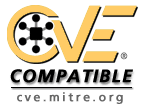Executive Summary
| Informations | |||
|---|---|---|---|
| Name | CVE-2024-31205 | First vendor Publication | 2024-04-08 |
| Vendor | Cve | Last vendor Modification | 2024-11-21 |
Security-Database Scoring CVSS v3
| Cvss vector : N/A | |||
|---|---|---|---|
| Overall CVSS Score | NA | ||
| Base Score | NA | Environmental Score | NA |
| impact SubScore | NA | Temporal Score | NA |
| Exploitabality Sub Score | NA | ||
| Calculate full CVSS 3.0 Vectors scores | |||
Security-Database Scoring CVSS v2
| Cvss vector : | |||
|---|---|---|---|
| Cvss Base Score | N/A | Attack Range | N/A |
| Cvss Impact Score | N/A | Attack Complexity | N/A |
| Cvss Expoit Score | N/A | Authentication | N/A |
| Calculate full CVSS 2.0 Vectors scores | |||
Detail
| Saleor is an e-commerce platform. Starting in version 3.10.0 and prior to versions 3.14.64, 3.15.39, 3.16.39, 3.17.35, 3.18.31, and 3.19.19, an attacker may bypass cross-set request forgery (CSRF) validation when calling refresh token mutation with empty string. When a user provides an empty string in `refreshToken` mutation, while the token persists in `JWT_REFRESH_TOKEN_COOKIE_NAME` cookie, application omits validation against CSRF token and returns valid access token. Versions 3.14.64, 3.15.39, 3.16.39, 3.17.35, 3.18.31, and 3.19.19 contain a patch for the issue. As a workaround, one may replace `saleor.graphql.account.mutations.authentication.refresh_token.py.get_refresh_token`. This will fix the issue, but be aware, that it returns `JWT_MISSING_TOKEN` instead of `JWT_INVALID_TOKEN`. |
Original Source
| Url : http://cve.mitre.org/cgi-bin/cvename.cgi?name=CVE-2024-31205 |
Sources (Detail)
| Source | Url |
|---|
Alert History
| Date | Informations |
|---|---|
| 2024-11-25 05:24:48 |
|
| 2024-04-09 00:27:25 |
|
| 2024-04-08 21:27:21 |
|





